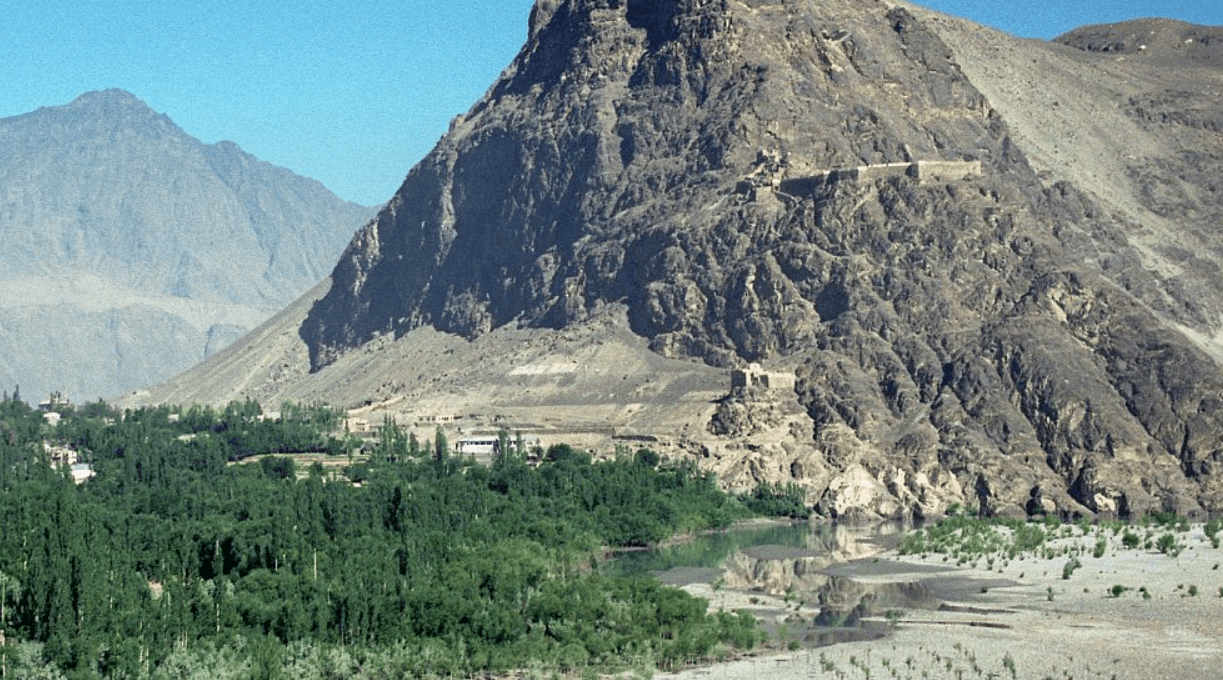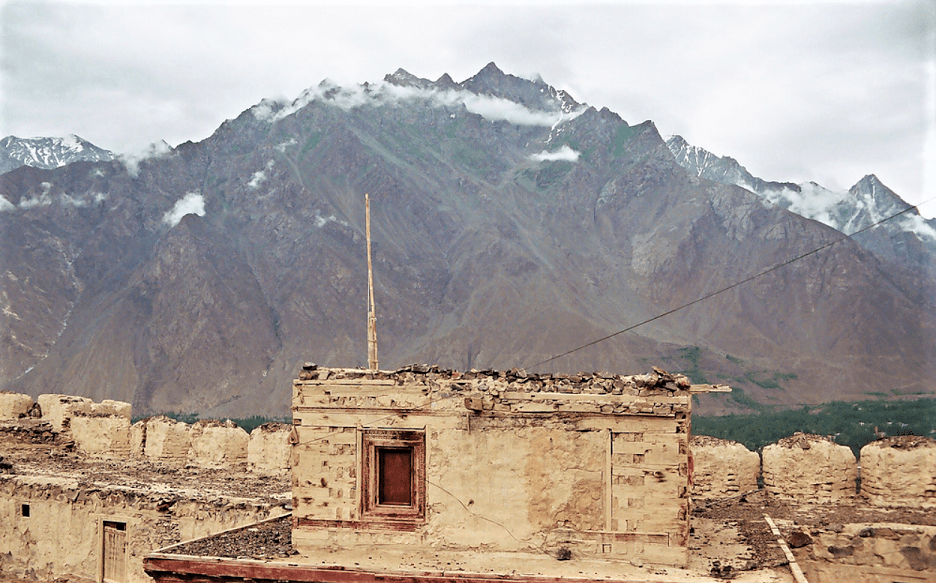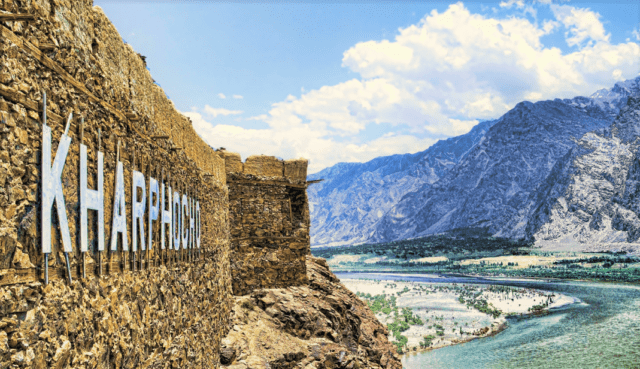Skardu (Kharpocho) Fort means the king of Forts is a fort located in Skardu, a city in Pakistan’s Gilgit-Baltistan province.
Kharpocho, which in Balti means “the King of Forts,” is a fitting name for a building that is inaccessible to anybody unwilling to complete the challenging ascent.
The fort is “perched above the intersection of the rivers,” according to Australian mountaineer and filmmaker Greg Child, and it has a view of the Rock of Skardu.
On the Indus River’s bank is where the fort is situated. The confluence of the Shigar and Indus rivers lies close to this fort.
This location has a well-established history that demonstrates how the king and queen once resided here with their families.
Kharpocho Fort, which is over 1,400 metres above the city, stands as a tribute to the tenacity of the Balti people.
History
At the end of the sixteenth century, Ali Sher Khan Anchan (1560-1625 AD), who dominated the area in the 17th century, constructed the fort.
Under the direction of Maharaja Gulab Singh, General Zorawar Singh of the Dogra Rajput clan took control of the fort after realizing its significance in the town.
His several military campaigns included one that included the annexation of Baltistan to the princely state of Jammu and Kashmir.
Ranbir Singh oversaw the fort’s destruction in 1857, which included leveling it to the ground. Aurangzeb, the Mughal emperor, too made an unsuccessful attempt to take control of the fort.

Jammu and Kashmir State Forces, commanded by Lt. Col. Sher Jung Thapa, were stationed inside the fort during the First Kashmir War in 1947.
Under the direction of the Pakistan Army, the Gilgit Scouts and insurgent State Forces soldiers attacked the fort. The Pakistani army engaged the fort’s Skardu garrison in combat on February 11, 1948.
The two engaged in combat for six hours before the invaders withdrew. On February 14, they returned and “directed harassing fire into the fort.” More than six months passed during the siege.
On August 13, 1948, the Kashmiri forces finally fled the fort in small groups after running out of supplies and ammunition. On August 14, the fort gave up the ghost. With the exception of Col.
Thapa and his Sikh orderly, who were captured as prisoners, all the surviving men were reportedly slain by the invaders. Skardu ultimately changed its name to Gilgit-Baltistan and was incorporated into Pakistan’s sovereignty of Kashmir.
The fort is thought to have been constructed many years ago by Skardu’s then-ruler Rmakpon Bogha. With the introduction of Zulfiqar Ali Bhutto’s political reforms in the 1970s, the Maqppons’ dominion over Skardu may have come to an end, but the fort’s grandeur as a representation of authority and power has endured.
American mountaineers Robert Bates and Charles Houston claim that their time at the fort was “lavishly entertaining.” In numerous wars, the fort served as a military front.
Local forces were aware of the conflict and the fort’s placement in the town during the struggle against the Dogra, the area’s ruler during the subcontinent’s split. In order to monitor the entrance and exit points of the Skardu city, they first occupied the fort.
Structure
From the Qatilgah Main Bazar in Skardu City, you must hike for about an hour to get to the summit of the fort. The old building contains multiple rooms and a large area enclosed by a wall.
During the Gilgit-Baltistan battle for independence, artillery bombardment caused several of the rooms to burn down. The walls were constructed with large stones.
The use of artistic talent and woodworking technique to construct a castle is incredible. A water channel called “Gango pi Khrongh” was constructed from the Sadapara Lake to a location close to the fort.
Persian was designated as Baltistan’s official language after the Dogra emperors took control of the area. On one of the walls of the Fort, there is some Persian writing that has been put there.
Architecture
The fort is a brutish fist of rock and stone, and due to its jagged edges, it appears as though the mountain itself was used to construct it. It is the difficult ascent to the historic citadel from the 17th century.
Jutting rocks make you double-check your route at every bend and turn. The merciless mountain is on one side, while the huge expanse of nothing is on the other.

You can almost reach the summit of the hill after a 30-minute hike, where you can look down at a bird’s-eye perspective of the city on one side and the powerful Indus River on the other.
A tiny window-like opening that can only fit one person through it at a time serves as the fort’s entrance. The view is captivating once inside.
The fort’s enormous size surprises you despite the fact that time has not been kind to it and preservation efforts are nowhere to be found.
The ceiling of Kharpocho’s reception is approximately 30 feet high and is supported by enormous tree trunks and old stone. Intelligent design keeps the rooms cool even when the sun is directly overhead on the hill.
On top of what appears to have once been the fort’s courtyard, a historic mosque now stands. It is locked, and nosy outsiders are not permitted.
According to locals, the rajas of that era dug a covert tunnel beneath the mountain that they used to get from the city to the fort. It’s thought that nobody knew about the tunnel’s existence but the royal family, who would use it during battle.
Tourism
In Skardu, Gilgit Baltistan, the Kharpocho Fort is a historical site and popular tourist destination.
Travelers simply have to negotiate a more difficult downward descent without the legendary tunnel. The rocks could fall out from under you if you take one incorrect step.
However, one is often kept as sure-footed as a goat out of fear of the deep fall below. Naturally, it is helpful to remember that there is a lot more to see in Skardu after you reach the bottom.
Despite numerous restoration efforts, the fort nevertheless offers a spellbinding perspective of the best examples of old construction.











